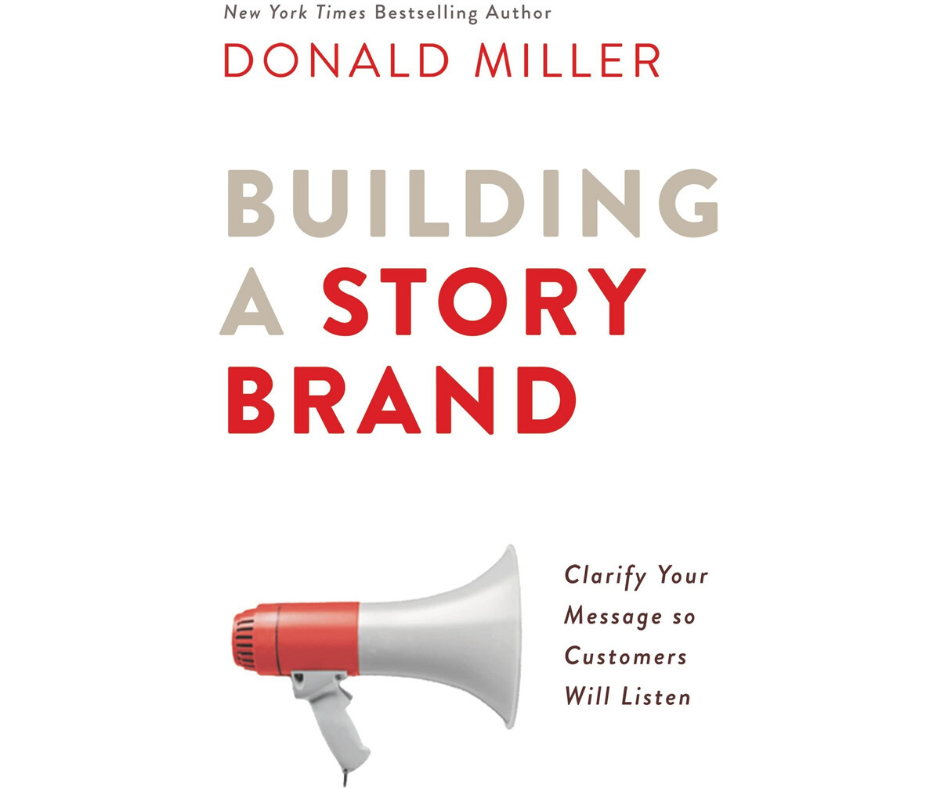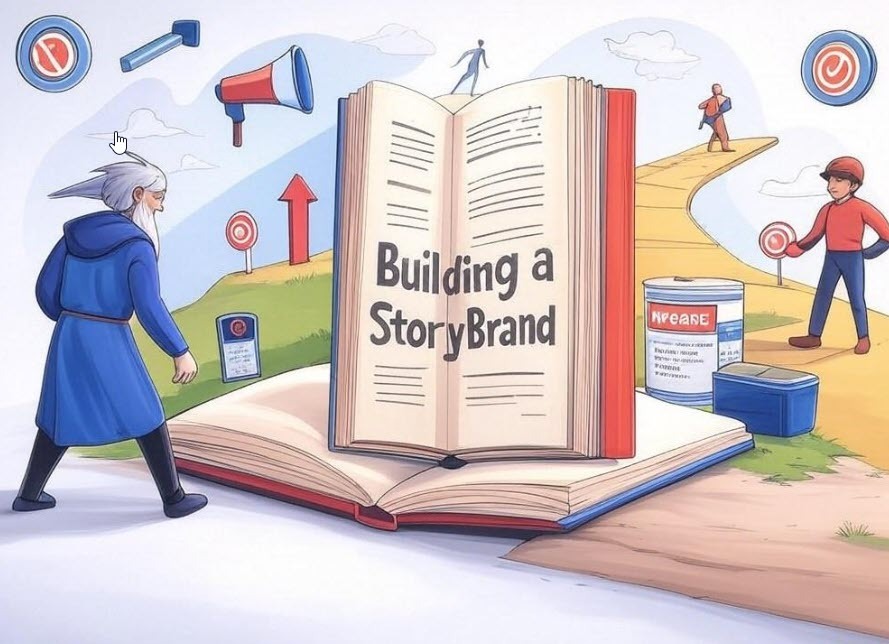Comparing the Power of Storytelling and Value Proposition in Modern Marketing
Marketing is a profession driven by constant change—new tactics, new platforms, and new technologies emerge every day. Yet one timeless element consistently cuts through the noise: storytelling. Donald Miller’s Building a StoryBrand champions the art of engaging customers through a clear, compelling narrative. By placing the customer at the center of the story, brands can build deeper connections, inspire action, and ultimately grow their business. In this article, we’ll explore how Building a StoryBrand fits into the broader tradition of storytelling in marketing—particularly Joseph Campbell’s “Hero’s Journey”—and how it aligns with the strategic approach found in Alexander Osterwalder and Yves Pigneur’s Value Proposition Design.

The Origin Story of the “Hero’s Journey”
To understand the backbone of Building a StoryBrand, it helps to begin with Joseph Campbell’s concept of the Hero’s Journey. Campbell, an American professor of literature and comparative mythology, extensively researched how myths from different cultures share a common narrative structure—a hero who embarks on an adventure, faces a crisis, and returns victorious, transformed, and enriched by the journey.
While Campbell’s work initially focused on mythology and folklore, his “Hero’s Journey” became a blueprint for storytelling across various media, including film (think Star Wars) and literature (The Hobbit, Harry Potter, etc.). Modern marketing gurus took note, realizing the same structure could captivate audiences and build stronger brand narratives. Suddenly, the idea of guiding customers (the heroes) through a journey or quest—supported by a brand (the mentor or guide)—transitioned from epic fantasy to marketing strategy.

“Building a StoryBrand”: The Customer as Hero
In Building a StoryBrand, Donald Miller emphasizes one key principle: the customer is the hero, not the brand. Miller’s seven-step framework helps businesses clarify their message and leverage the power of storytelling to resonate with prospects. This approach reverses the common mistake of brands positioning themselves as the main character. Instead, Miller urges marketers to view the brand as a guide, supporting the customer-hero on the journey to overcome challenges and achieve desired outcomes.
A Character – The hero (your customer) wants something.
Has a Problem – There’s an obstacle in their path.
Meets a Guide – Your brand is the helpful mentor.
Who Gives Them a Plan – Offer a path forward.
And Calls Them to Action – Inspire the hero to take the next step.
That Helps Them Avoid Failure – Show the costs of inaction.
And Ends in Success – Reveal the happy ending that awaits.
By integrating this narrative arc, marketing messages gain a cohesive structure that speaks directly to the customer’s internal and external motivations—just as Campbell’s hero overcame monsters, dragons, or cosmic forces in mythology.
Comparisons with Other Story-Centric Marketing Books
Miller’s emphasis on story echoes the ideas put forth by other influential marketing authors:
Seth Godin’s “All Marketers Are Liars” (later retitled “All Marketers Tell Stories”): Godin delves into the idea that marketing should evoke emotions and authenticity through storytelling rather than mere product features. Miller’s approach dovetails nicely with this focus on emotional resonance.
Simon Sinek’s “Start with Why”: While not a strict “storytelling” book, Sinek’s emphasis on the deeper purpose behind a brand parallels Miller’s guidance concept. Both highlight how stories can clarify a brand’s purpose, forging stronger customer connections.
These works share a common thread: they elevate marketing beyond superficial slogans to a more human, story-driven approach that resonates with people’s values and aspirations.
Integrating “Value Proposition Design” into Your Story
One of the challenges with purely story-based approaches is ensuring that the story aligns tightly with real-world market needs. That’s where Alexander Osterwalder and Yves Pigneur’s Value Proposition Design comes in. Using frameworks like the Value Proposition Canvas, brands can systematically map:
Customer Pains & Gains: What obstacles and frustrations do customers face? What benefits or “wins” are they hoping to achieve?
Product & Service Fit: How does your offering alleviate pains or create gains?
Customer Segments: Which groups stand to benefit the most from the product or service?
When you combine Miller’s storytelling blueprint with the granular data from Value Proposition Design, you get a powerful one-two punch:
Narrative Clarity (StoryBrand) – You know how to shape your brand story so it resonates emotionally with your audience.
Market Validation (Value Proposition Design) – You confirm that your story addresses genuine customer pains and desires.
By weaving these two approaches together, you ensure the hero’s journey in your marketing narrative isn’t just compelling—it’s also backed by concrete insights into what your customers truly need.
Why This Matters in Today’s Marketing Landscape
Rapidly Shifting Customer Expectations: Consumers are bombarded with information. A clear, story-driven approach breaks through the clutter.
Human-Centric Messaging: Rather than talking about the product, focusing on the customer’s story fosters trust and relevance.
Strategic Differentiation: When combined with frameworks like the Value Proposition Canvas, a brand can stand out by clearly articulating why it matters and how it solves specific customer pain points.
Modern CMOs and marketing consultants need strategies that bring all the moving parts together into a compelling narrative that tangibly resonates with their audience. Miller’s method, when paired with Osterwalder and Pigneur’s value proposition frameworks, offers a holistic way to do exactly that.
Final Thoughts
Building a StoryBrand by Donald Miller underscores a powerful truth in marketing: people respond to stories in profoundly human ways. Drawing from the time-honored tradition of Joseph Campbell’s “Hero’s Journey,” Miller’s framework puts the customer in the spotlight, casting the brand as a guiding mentor that helps the hero overcome challenges. This perspective shift—from brand-focused to customer-focused—yields a narrative that resonates more authentically and drives real-world results.
And when you add in the meticulous, data-driven approach of Value Proposition Design from Alexander Osterwalder and Yves Pigneur, you create a marketing powerhouse: a compelling story, grounded in genuine market insights. Whether you’re launching a startup, rethinking a century-old brand, or simply looking to sharpen your message, these storytelling and strategic frameworks can help you tap into the time-tested power of narrative to grow your business and delight your customers.
This article is brought to you by Find a Business Pro—your trusted resource for marketing book reviews, market insights, and everything that helps modern marketers and CMOs thrive in a fast-paced world.
 Add Row
Add Row  Add
Add 

Write A Comment